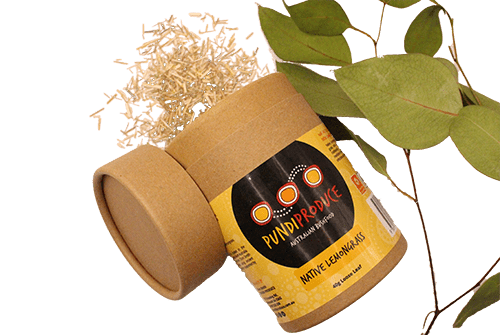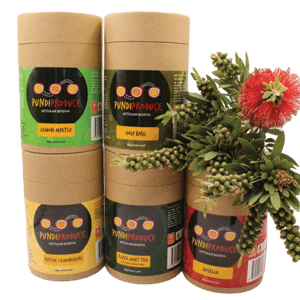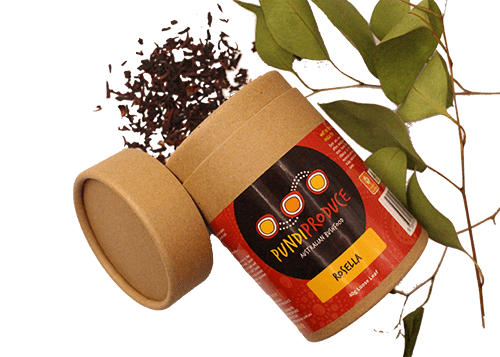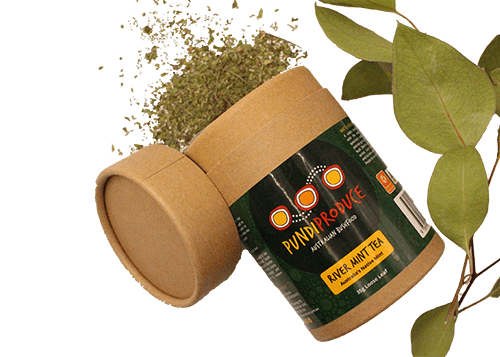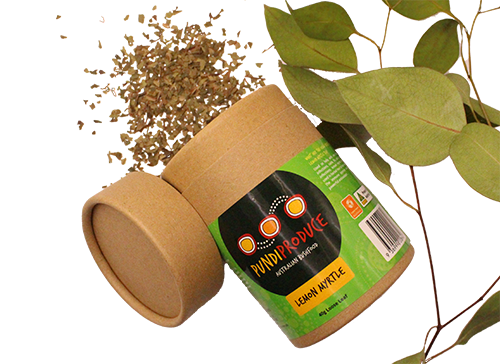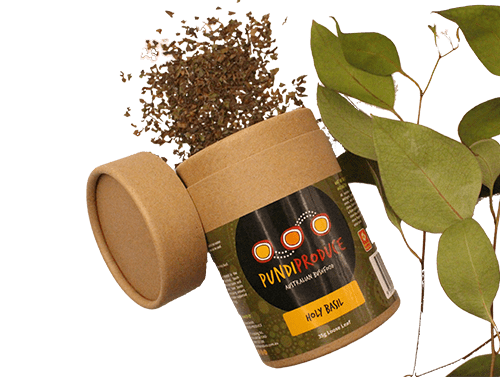Native Herbs - Pundi Produce
Native Herbs - Pundi Produce
Couldn't load pickup availability
Description
Farmer Dominic Smith is the face of Pundi Produce in the Riverland.
The business, which was established in 2014, was cultivated by Dominic’s love of working outside and a desire to produce, market and distribute the highest quality native food he could grow.
In the past, Dominic farmed commercial crops but switched to natives because of the overall sustainability of the native food industry and its connection to his indigenous roots.
Passionate about conservation and land management, Dominic grows most of his produce using aquaponics. Crops using this method are much less taxing on the environment, using less water, land and labour than traditional agriculture.
However, growing native food has also become a vehicle to pursue another passion, providing opportunities for young indigenous people in his community.
Dominic intends to use his farm as a learning ground, where participants can acquire farm skills and one day, be able to apply them to their own properties.
Native Rosella
Each and every part of the Roselle offers amazing benefits, be it the stem, leaves, flowers, or even seeds.
Australian native hibiscus is rich in vitamin C, minerals and various antioxidants. Ruby red in colour and tart, sour taste.
Native roselle plants have a bright red flower with a unique tart flavour, reminiscent of rhubarb.
The tea is made from the heart of the flower, which is dried and ground into powder before being infused in hot water.
Rosella tea is commonly enjoyed during the winter months as a warming beverage.
It has been used traditionally by Aboriginal people as an ingredient in remedies for colds, coughs, and flu symptoms.
Native Lemongrass
Native Lemongrass is an aromatic grass with a strong citrus odour, traditionally used in Aboriginal medicine to treat flu symptoms, chest infections and skin sores.
Lemongrass is known to have a lemony taste, like lemonade – a cool kick, and refreshing. You can use it to make a homemade lemonade drink.
The classic essence of Australia. Use fresh in cooking and teas or dry, it can add a zing to your food.
Native Lemon Myrtle
Used to help with sore throats, infections, colds, flu and to treat infections, lemon myrtle is often used in herbal teas to help enhance the immune system and as a powerful antioxidant.
Lemon Myrtle’s sweet citrus aroma comes from its natural compounds, which include citral, citronellal, and linalool.
Its unique aromas are often described as sweet lemon – perfumed with menthol notes akin to the scent you get when you lick a solid stick of lemon lolly.
The leaves can be used in all your favourite dishes, or steep in boiling water to make a delicious, iced tea. Can also be used as an ingredient in cosmetics and herbal remedies.
Native Holy Basil
All varieties of Holy Basil are astringent, pungent, warm and sweet, with notes of peppermint, cloves, licorice, or lemon. Raman has a flavour profile that is more spicy or clove-like, whilst the Vana variety is more fragrant and sweet with an anise taste. It's what gives you that refreshing kick in the mouth you're looking for when you want to drink a glass of water.
Native Rivermint
A subtle Australian native herb with the taste and aroma of spearmint, making it the perfect pick-me-up tea.
This rambling mint bush (Mentha australis) is found across South-eastern Australia and has been used by First Nations People for over 60,000 years.
Rivermint as a tea, added to roast lamb, in sauces, or to simply freshen up a salad.
Rivermint tea is known to support digestion thanks to its menthol properties. It is also reputedly good for easing the effects of colds.
Early Indigenous Australians used Rivermint for medicinal purposes; the crushed leaves were sniffed to relieve headaches.
Share
